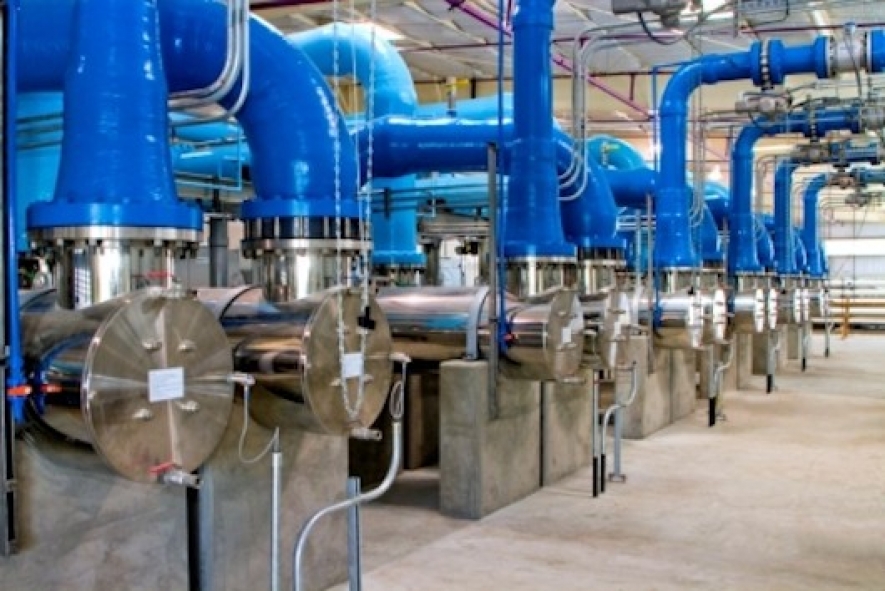Opened in July, the US$72 million Silicon Valley Advanced Water Purification Center is the most advanced such plant in the US, and uses a multi-step system of microfiltration, reverse osmosis and ultraviolet rays to produce water of higher quality than typical drinking water. According to Hossein Ashktorab, recycled water unit manager at the Santa Clara Valley Water District, the new plant daily produces 8 million gallons of water nearly as pure as distilled water. The advanced system is currently being used to improve the quality of the county’s recycling by treating water from older recycling systems, then blending it back with existing recycled water from the San Jose-Santa Clara Regional Wastewater Facility. The process starts by feeding treated waste water from the city of San Jose through small tubes in a microfiltration unit, made up of thousands of straw-like hollow fibers. The sides of the fibers are lined with extremely fine pores 0.1 micron in diameter, the equivalent of 1/300th the width of a human hair, which filter out solids, bacteria, protozoa and some viruses.
Reverse osmosis is the next step, forcing water under high pressure through membranes with holes small enough for a water molecule to pass through and not much else. Left behind are salts, viruses and such man-made contaminants as pharmaceuticals, personal care products and pesticides – a growing issue for water treatment facilities. For the final step, the water flows through chambers that zap it with strong ultraviolet light. Like a powerful disinfectant, the UV rays scramble the DNA (and thus neutralize) any remaining viruses and other trace organic compounds, in a process similar to the sterilization of medicine, food and fruit juices. In all, the process removes 99.99 percent of all pathogens. The resulting purified water has a TDS (total dissolved solids) content of 40 parts per million.
For comparisons sake, drinking water in the county averages 215 parts per million, while the recommended maximum contaminant limit is 500 parts per million. In other words, water from the advanced purification center is clean enough to drink, as one enthusiastic county official did at the plant’s unveiling. For now, the water is going toward improving the quality of the county’s recycled water, used for irrigating crops and watering golf courses, parks, school lawns, street medians and business park landscaping. It’s also used to cool buildings and data centers, which will eventually include Apple’s new campus in Cupertino, opening in mid-2016.
The tech giant is working closely with the water district to expand local recycled water programs, and is contributing $4.8 million toward the construction of a similar advanced recycled water facility near the coming campus. With the potable quality of the water, the plan all along has been to introduce it into local taps by 2025. But as California’s drought continues, the project may get fast-tracked, and residents may be drinking the recycled water in as little as two years. In that scenario, the recycled water is pumped into aquifers to recharge groundwater, then pumped up, retreated and piped to local homes. (KH/ST)




















